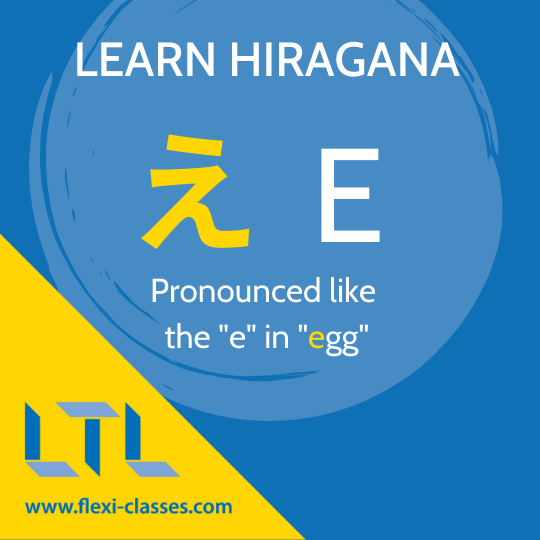How to Learn Hiragana (Quickly) // 7 Terrific Tips To Success
How To Learn Hiragana? Learn From The Pros!
Here we go then – your Japanese adventure is starting and today we are here to help you with the big question “How to learn Hiragana“.
(It’s not that scary, I promise!)

I remember my first class in Japanese. I’d decided to learn a new language at university, and it was only in my first Japanese class was I told that Japanese has three alphabets.
Just to add to my pain, apparently half my classmates already knew hiragana… Or at least had a hold on how to learn hiragana.
Leaving that first class, I felt way behind already, and pretty darn terrified.
Three alphabets? What had I gotten myself into?
Everyone told me not to worry. That I’d get there eventually. That it wasn’t really that hard. SPOILER – they were right!
But how could I believe them? This completely alien looking alphabet looked back at me, mocking me with every character I couldn’t read…
And then about a week later, I realised I could read anything.
Hey, that was quick!
What they don’t tell you is despite the fact Japanese may have three alphabets, two of them are phonetic and entirely identical in what sounds they represent.
(We’ll go over them in a minute).
That means that once you can read the alphabet, you can say ANYTHING pretty perfectly. Seriously.
If you don’t believe me, then think for a minute how awkward the English language can be:
- Their, there, they’re
- Through, threw, though, thorough
- Two, too, to
The roman alphabet is only a rough, more confusing guide on how things sound. Hiragana, however, is just that solid sound. Learn it, and you can say anything*!
(*As long as everything is written in hiragana. Which is most likely isn’t. But we’ll get to that later. First, let’s concentrate on how to learn hiragana!)
Without wasting any more time, let’s get onto some top tips to help you on how to learn hiragana that I wish I knew before.
Not just that, but how to learn hiragana quickly, and effectively.
How to Learn Hiragana | Tip 1 (Don’t Panic)
How to Learn Hiragana | Tip 2 (Understand The Concept)
How to Learn Hiragana | Tip 3 (Understand The Hiragana Table)
How to Learn Hiragana | Tip 4 (Practice Everyday)
How to Learn Hiragana | Tip 5 (Read Everyday)
How to Learn Hiragana | Tip 6 (Print The Hiragana Table)
How to Learn Hiragana | Tip 7 (WATCH OUT For These Things)
BONUS | Free Hiragana Quiz
How to Learn Hiragana | FAQ’s

How to Learn Hiragana | Tip 1 (Don’t Panic)
I know I covered this in the intro a bit, but it’s so important not to get overwhelmed by it.
I remember I spent days and days at my desk with that damn hiragana table above me, taunting me.
And now, 6 years later, I can still read it without difficulties.
It’s not something you forget easily, and really does only take a few days to learn – even if it feels like it might take 6 years to you now just to master.
On that note… want to see that Hiragana table…?
Here it is!

Notice in the table on the bottom left the sound is shown and on the bottom right the Katakana equivalent is shown so you can match them up.
Today though, let’s just focus on one alphabet!
From the table we can see the 5 Hiragana vowels on the right side with ease. These are the most important to get familiar with:
- あ [a]
- い [i]
- う [u]
- え [e]
- お [o]
The other 41 characters follow a similar pattern with the consonant that is followed by a vowel. For example:
- ま [ma]
- み [mi]
- む [mu]
- め [me]
- も [mo]
Nothing to be scared of right?! Must a bunch of beautiful characters that you need to remember.
If it all looks quite difficult I recommend this video. It’s presented by Risa who gives us some great ways to remember each Hiragana character at a nice pace.
How to Learn Hiragana | Tip 2 (Understand The Concept)
Honestly, I was clueless.
Hiragana was the first phonetic alphabet I’d ever learnt, so I was so confused how one symbol could create a ‘ta’ or ‘po’ sound.
Surely both a ’t’ and an ‘a’ are needed? Nope.
Actually, even if you know nothing about Japanese phonetics or grammar, you probably knew this, but… Japanese works in syllables, and each syllable must have both a consonant and a vowel.
The only exception being the ’n’ sound.
That’s why, if you were going to ‘create’ a Japanese sounding word to try and imitate a Japanese speaker, you might say something like ‘gurasu’ for ‘glass’ or ‘taberu’ for ‘table‘.
Gu-Ra-Su / Ta-Be-Ru. (Actually, these are both Japanese words for glass and table…)
Glass = ガラス
These words do not use Hiragana but Katakana, that’s a lesson for next time
Table = テーブル
So when we picture it like that, it helps to understand that there is one symbol for ‘Ga’, one symbol for ‘Ra’, one symbol for ‘Su’ and so on.
And now you understand that each symbol represents a phonetic syllable, you can start to understand the hiragana table…
This is a key point in how to learn hiragana properly!
How to Learn Hiragana | Tip #3 (Understand The Hiragana Table)
So we had a little glimspe of the Hiragana table above, but how do we read it?
Looks terrifying at first glance, right?! There’s no ABCD organisation here. But actually, it’s a lot more organised than you think.
Remember me saying that every symbol represents a phonetic syllable? And every syllable has a consonant and a vowel?
Well, this table is basically a handy representation of how those consonants and vowels fit together.
Let’s take a look at it again:

There are 10 different consonants, and 5 different vowels.
Columns are consonants. Vowels are rows.
The table is usually read from right to left, in traditional Japanese fashion, and bottom to top.

So, on the far right the first column is actually all the vowels, ‘a’ ‘i’ ‘u’ ‘e’, ‘o’.
Then moving to the left, in the ‘a’ row, you’ll find ‘ka’ ‘sa’ ‘ta’ ‘na’ etc. Down another row, and you’ll find the ‘i’ vowel, and so on.
(*Si is actually pronounced ‘shi’, ‘ti’ is actually pronounced ‘chi’.)
Again, using the video we posted above would be hugely advisable to listen to how these Hiragana all sound.
Review this table everyday and get familiar with them. Some will stick instantly and others will take time.
FOR EXAMPLE – I always liked the き [ki] Hiragana because it is pronounced like “key”, and also looks like one. After discovering this I never forgot it!
Others will take longer to stick but you’ll get there in no time!
How to Learn Hiragana | Tip #4 (Practice Everyday)
We just touched on it above, but you know the score… Practice makes perfect!
Write, check, repeat. Write, check, repeat.
There’s really only one way to drill hiragana into your brain… and if you want to know the best way on how to learn hiragana… It’s hard to beat this one!
If pen and paper aren’t your thing, you could also try using apps.
Memrise helped me a lot with learning both the Japanese and Korean alphabets. Skritter will also do a similar job.
Rinse and repeat. It sounds boring but once you get there, you’ll be reading Japanese material and the feeling is oh so sweet!
How to Learn Hiragana | Tip #5 (Read Everyday)
Goes hand in hand with tip 4.

Set aside 30 minutes or an hour every day (or 10 minutes if you can’t manage any more) to read a few sentences or a short story you are able to get hold of.
It doesn’t matter if you can’t read it.
Just practice recognising the characters and writing the romaji underneath it to make sure you’ve got the right pronunciation.
You could go one step further and then look up these words online using a Japanese keyboard and Google Translate.
A Japanese keyboard is easy to use.
Just type in the same letters as you want the characters to appear – e.g. type ‘ga on a qwerty keyboard for Japanese ‘ga (が) to appear.
How to Learn Hiragana | Tip #6 (Print Out The Hiragana Table)
- Make sure it’s hanging above your desk.
- Make sure it’s the first thing you see when you wake up
- Make sure it’s the last thing you see when you go to bed!
You want to be dreaming hiragana.
Well, maybe that might turn into a bit of a nightmare instead – but you get my drift.
Having the Hiragana table printed out and visible is vital when you’re practicing and trying to learn Hiragana.
EXTRA TIP: Start off with one printed out with the romaji below the symbols (as the table in this blog does), then once you get more confident, use one without!
BONUS BLOG – Want to discover how Japanese, Chinese and Korean differ? We wrote a big guide comparing Japanese vs Korean vs Chinese just for you!
How to Learn Hiragana | Tip #7 (WATCH OUT FOR THESE)
So far I’ve made learning Hiragana sound pretty easy. Or at least I hope I have.
Well, as with every rule, there are things that break the rules, too. Luckily with hiragana, there aren’t many rule breakers. But there are things to watch out for.
Dakuten
To differentiate between voiced and unvoiced consonants in Japanese, a double dash (similar to this “ ) is used on top of the unvoiced counterparts. OR, a small circle is used too.
This is known as a Dakuten.
If you want to hear these in action, go and watch that video above again (trust us, it’s the best video for learning Hiragana there is)!
Let’s look at some examples:
- ‘ka’ is か and ‘ga’ is が
- ‘ha’ is は, ’pa’ is ぱ, and ‘ba’ is ば
Can you see the differences between them? Look again, but in a bigger font…
か and が
は, ぱ and ば
So what exactly is unvoiced and voiced?
Well, to native English speakers, ‘p’ and ‘b’, ‘k’ and ‘g’ may all sound super different, but have you ever noticed that you actually do the same thing with your mouth to make these sounds?
The only difference is basically if air escapes or not.
Voiced ‘g’ air escapes, unvoiced ‘k’ and there is no air. Try with ‘p’ (unvoiced) and ‘b’ (voiced). Put a piece of paper in front of your mouth when you say these letters, and you’ll see what I mean!
To summarise that the Dakuten is essentially taking a hiragana you already know and adding an additional symbol to it to change their pronunciation.
The Hiragana は [ha]
Another thing to watch out for is ‘ha’ は.
Written in the table as ‘ha’, when it functions as a particle (you’ll find out about them soon!) it is actually pronounced ‘wa’.
Why? Essentially the sound has changed over time but we’ll let our friends at Japanese Pod explain again as they do such a good job!
And the last thing…
Watch The Spelling
Japanese spelling is pretty much always correspondent with the actual sound you pronounce.
However, the spelling of a word might change after a certain sound or word to accord with Japanese pronunciation rules.
This is much more practical since it means that you will never pronounce a word wrong – but you might find yourself spelling it wrong until you get used to the rules.
They will come natural to you at some point!
There we go, our top tips on how to learn Hiragana. Japanese is a beautiful language and should not be approached with fear, but with excitement.
Being able to read Hiragana is a really cool feeling and opens many doors, especially if you go to Japan…
Did you find this article useful? Drop us a message in the comments and if you fancy, let us help you learn Hiragana with our amazing team of native speaking Japanese teachers.
Next up… Katakana and then Kanji!

How To Learn Katakana (カタカナ) // Essential Things To Know
How to Learn Katakana? | Katakana is one of Japanese’s three alphabets. Katakana are generally more angular looking than Hiragana and focuses on loanwords.
BONUS | FREE Hiragana Quiz
Don’t say we don’t treat you well!
Fancy testing your Hiragana knowledge? Don’t worry it’s super quick with only 20 questions in total and results are instant!
What’s not to like? Give it a whirl and see how you get on! If you nail it, feel free to share those top scores in the comments below!
How to Learn Hiragana | FAQ’s
How many alphabets in Japanese?
Japanese has 3 alphabets which each serve different purposes.
They are:
Hiragana
Katakana
Kanji
You can find out more about the 3 Alphabets of Japanese here.
How many Hiragana are there?
There are 46 Hiragana on the Hiragana table to learn, each representing a different sound.
How many vowels in Hiragana?
5, the same as in English.
How many consonants in Hiragana?
There are 10 consonants in total.
Is the Hiragana は pronounced as ha or wa?
Actually both! This character has changed it’s pronunciation over time.
There is a simple 3 minute video guide here which explains this in more detail.
Want More From LTL?
WANT TO LEARN JAPANESE? Check out our online Japanese courses here.
We offer a 7-day free trial to all new students where you can study 24/7.
What about studying Japanese in Japan instead? We’ve got your back. Our Japanese courses in Tokyo can either be taken in small groups of no more than 5 students or individually for a more tailored experience.
We even offer incredible homestay experiences in Tokyo as well.
Come and be a part of this amazing community.
















11 comments
Good tips, studying Japanese at the moment, really enjoying it
Thanks for the comment Irene!
At first having 3 alphabets really confused me but I completely get it now. I love Japanese
Exactly! It's not that bad is it, once you know the reasoning and history.
Good tips
Thanks Walter
Thanks for the quiz I only got 2 wrong
Great score Graham, thanks for sharing!
I still always confuse う ラ!!
Very normal to do so. Good to share it though! For me the う looks like a punch in the stomach whereas ラ doesn't quite so much.
When we get punched in the stomach we'd go "uuff", which makes me remember "u"! Hope that helps
[…] Classes’ Guides to Hiragana and […]